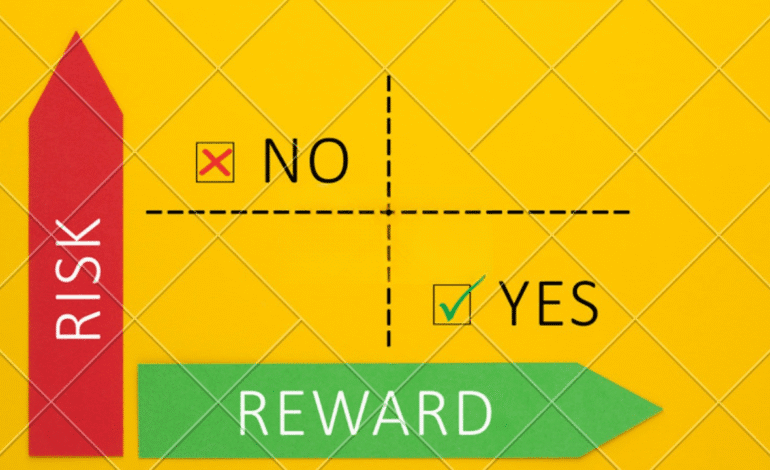
To build wealth in your 30s is to set the tone for the rest of your financial life. This decade is often a turning point. In your 20s, experimenting is normal. You may have hopped jobs, tried side hustles, spent recklessly, or even fallen into debt. By the time you hit your 30s, life usually looks different. You likely have a stable career path, a growing income, and increasing responsibilities. Rent or mortgage payments, family planning, and long-term dreams like owning a home or traveling the world become part of the picture.
From working with clients in the US, UK, Canada, Singapore, and Australia, I’ve learned that people who master financial strategies in their 30s rarely struggle later. Compounding works for them, not against them. The earlier you act, the easier wealth becomes.
This guide outlines 10 proven strategies to build wealth in your 30s, drawn from both professional experience and lessons shared by financially successful people across different countries. Each step is actionable, practical, and tailored for real life, not textbook theory.
1. Pay Yourself First Through Automated Savings
One of the most powerful yet overlooked strategies to build wealth in your 30s is the simple principle of paying yourself first. Most people save whatever is left after expenses, which often turns out to be nothing. The wealthy do the opposite, they take their savings off the top and live on the rest.
For example, a client in Toronto automated 20 percent of his monthly income into a high-yield savings account and investment funds. At first, he felt a pinch in his lifestyle. But within six months, his brain adjusted to the “new normal” budget. By 35, he had saved a six-figure sum without obsessing over spreadsheets.
Automating this process is key. Set up your bank to transfer money into your investment or retirement account the moment your paycheck lands. Think of it as your “future rent.” You wouldn’t skip paying rent to your landlord, so why skip paying yourself?
use our SIP calculator to see how your investments grow over time.

2. Max Out Retirement Contributions Early
If you’re in the US, retirement accounts like 401(k)s and Roth IRAs are gifts from the system. In the UK, pensions and ISAs (Individual Savings Accounts) serve a similar purpose. In Australia, your superannuation fund grows tax-efficiently. Singaporeans have the CPF (Central Provident Fund), which also accumulates interest and government contributions.
The advantage of starting in your 30s is time. Compounding isn’t magic, it’s math. A 30-year-old who contributes $500 per month into an S&P 500 index fund averaging 8 percent annual return will have around $745,000 by age 60. If that same person starts at 40, they would only have about $327,000. That is a $418,000 difference, all because of ten years.
I’ve seen too many people in their 30s delay contributions, thinking they’ll “catch up later.” The truth is, it’s nearly impossible to catch up once you lose a decade of compounding. If your employer offers a match, never leave that free money on the table.
3. Build an Emergency Fund
An emergency fund is boring until you need it. And then it becomes the most valuable financial asset you own.
In financial planning sessions with clients in London and Melbourne, I’ve noticed a recurring pattern: people without an emergency cushion end up derailing their investments when life throws surprises. A car accident, job layoff, or sudden medical expense forces them to pull money out of their investments, often at the worst possible time.
Experts generally recommend 3 to 6 months of living expenses in a liquid, accessible account. In practice, I suggest tailoring it to your lifestyle and career stability. If you work in a volatile industry like tech or startups, 6 months is safer. If you have dependents, push toward 9 months.
A client in California once told me his emergency fund “felt like wasted money” because it just sat in a savings account. But when COVID-19 hit and he lost his job for 8 months, that fund carried his mortgage, food bills, and insurance without debt. He called it “the most boring but heroic pile of money I ever had.”
4. Get Aggressive with High Interest Debt
If you want to build wealth in your 30s, the single biggest leak in your financial boat is high interest debt. Credit card balances, payday loans, and buy-now-pay-later traps eat away at your wealth faster than you can earn.
A 30-year-old in Sydney shared with me how his $8,000 credit card debt ballooned to $14,000 in just three years because of a 21 percent annual interest rate. He was investing in ETFs at the same time, earning about 9 percent returns. But every dollar of return was being wiped out twice over by debt. It was like running uphill while dragging a boulder.
The best approach is ruthless prioritization. Attack high-interest balances first, even if it means pausing investing for a short time. Use the avalanche method (tackle the highest interest rate first) or the snowball method (pay off the smallest debt first for psychological momentum). Both will work but the key is consistency.
Once you eliminate those 20 percent interest anchors, you free up cash flow to channel toward investments that actually grow your net worth.
5. Diversify Beyond Your Paycheck
One paycheck, even a good one, is fragile. Companies restructure. Markets dip. Industries change overnight. Relying solely on salary income is like balancing your entire life on a single leg.
Clients in Canada and Singapore who diversified early built resilience during downturns. One software engineer in Toronto started a weekend consulting gig teaching coding to beginners. Within a year, his side hustle paid for his family vacations. Another in Singapore launched a small e-commerce store that eventually grew to cover her mortgage payments.
Side hustles are not just about money. They expand skills, networks, and opportunities. Some people eventually turn them into full-time businesses. Even if you never scale, an extra $500 to $1,000 per month invested consistently can turn into hundreds of thousands over a few decades.
The modern economy makes this easier than ever. Platforms like Upwork, Fiverr, Shopify, and Substack allow you to monetize expertise or creativity globally. The point isn’t to quit your job immediately, it’s to create layers of financial stability that insulate you from shocks.
6. Invest in the Stock Market Consistently

One of the most proven strategies to build wealth in your 30s is investing regularly in the stock market. The key isn’t chasing hot stocks or trying to time the market. It’s about consistency.
I often use the phrase: time in the market beats timing the market. Research from Fidelity and Vanguard confirms that investors who simply stay invested outperform those who try to jump in and out.
For instance, if you had invested $500 per month in the S&P 500 index from January 2010 to December 2020, you’d have contributed $66,000. By the end of that decade, your portfolio would have grown to around $116,000. That’s nearly doubling your money without ever picking an individual stock.
ETFs (exchange-traded funds) and index funds are especially attractive because of their low costs and diversification. For readers in the US, a total stock market index or S&P 500 ETF is a great foundation. In the UK, FTSE All-Share or global index funds offer broad exposure. Australians often use ASX index funds combined with international ETFs.
The power lies in automation. Set up a direct debit into your brokerage account, choose your fund, and let compounding work silently. The market will have ups and downs, but your 30s give you decades to ride them out.
7. Real Estate for Stability and Growth
Real estate is a wealth builder that combines stability with long-term growth. While markets fluctuate, owning property provides tangible security. In many Tier 1 countries, housing has historically appreciated steadily, making it both a lifestyle and investment choice.
In the US, property owners often benefit from tax deductions on mortgage interest. In Australia, the concept of negative gearing allows investors to deduct certain losses on rental properties against other income, which has made property investment popular. In Singapore, the government’s housing policies through HDB (Housing Development Board) create affordable entry points that often appreciate over decades.
I worked with a client in London who bought a small apartment at 32, stretching her budget uncomfortably at first. Ten years later, not only had her property doubled in value, but the rental income covered her own family’s living expenses during a career break. That one purchase gave her financial freedom she never expected.
Of course, real estate is not risk-free. Property markets can cool, and maintenance costs add up. The key is buying smart:
- Focus on location and long-term demand.
- Don’t over-leverage with excessive mortgages.
- Consider rental yield as well as appreciation.
Even if you can’t buy property yet, start saving for a down payment. Property ownership often becomes easier in your 30s as your credit score improves and your income stabilizes.

8. Sharpen Your Skills to Increase Earning Power
While saving and investing are critical, the fastest way to build wealth in your 30s is often increasing your income. Cutting lattes might save $50 a month, but sharpening your skills could add $50,000 a year.
In today’s economy, skills depreciate quickly. A marketing manager in New York once told me how she nearly became obsolete because she relied on outdated advertising methods. When she upskilled in digital analytics and AI-driven campaigns, she doubled her salary within two years.
This applies across industries. In tech, certifications in cloud computing, data analysis, or cybersecurity can dramatically raise salaries. In finance, CFA or CFP designations open doors. In healthcare, specialized training leads to higher demand. Even soft skills like leadership, communication, and negotiation make you more valuable and promotable.
Consider your 30s the decade of reinvestment in yourself. Courses, workshops, online certifications, and even coaching are not expenses, they are assets that compound over time. Every extra dollar earned expands your saving and investing capacity, accelerating wealth growth.
9. Build Strong Financial Habits with Technology
Money is emotional. Without structure, even high earners can fall into lifestyle creep, spending every raise and never saving more. This is where technology becomes your financial ally.
Budgeting apps like Mint, YNAB (You Need a Budget), and Frollo in Australia help track every dollar. AI-powered banking features in the US and UK automatically categorize spending, send alerts for unusual expenses, and even recommend saving targets.
I once worked with a client in San Francisco who earned six figures but had nothing left at month’s end. After syncing his accounts with YNAB, he realized he was spending over $1,200 a month on food delivery alone. Cutting that in half instantly boosted his monthly savings rate by 10 percent.
Habits like weekly money check-ins, auto-scheduling bill payments, and tracking net worth monthly sound simple, but over a decade they completely reshape your financial trajectory. Think of technology as a silent coach nudging you toward smarter behavior.

10. Protect Your Wealth with Insurance
The final strategy to build wealth in your 30s is protection. Building assets without guarding them is like building a castle without walls. One unexpected event such as illness, accident, or lawsuit can wipe out years of progress.
In the US, health insurance is non-negotiable. In Canada, government healthcare covers many needs, but disability insurance and life coverage are still crucial. Australians rely on a mix of Medicare and private insurance, while Singaporeans have the MediShield Life system but often add private plans.
Key areas to cover in your 30s:
- Health insurance: Prevents medical bills from destroying your savings.
- Life insurance: Ensures dependents are financially secure. Term insurance is usually the most cost-effective option.
- Disability insurance: Replaces income if you can’t work due to illness or injury.
- Home and renters insurance: Protects property and liability risks.
A client in Manchester shared how his disability insurance became his lifeline after a car accident sidelined him for over a year. Without it, he would have drained retirement accounts and sold his home. Instead, his policy paid out, and his wealth-building plan stayed intact.
Insurance doesn’t grow your money directly, but it prevents you from losing it all. It’s not exciting, but it’s essential.
Frequently Asked Questions About Building Wealth in Your 30s
Is it too late to start building wealth in my 30s?
Not at all. In fact, your 30s are one of the best decades because you still have 30-40 years of compounding ahead. Starting now is far better than delaying to your 40s.
How much should I save in my 30s?
A common rule is saving 20 percent of your income. If that feels unrealistic, start with 10 percent and increase every year. The goal is consistent growth, not perfection.
Should I focus on debt or investing first?
High interest debt (above 7-8 percent) should take priority. The guaranteed return from paying it off beats most investments. Once that’s under control, shift toward investing.
What’s the biggest wealth-building mistake people in their 30s make?
Lifestyle inflation spending every raise on cars, bigger houses, or unnecessary luxuries. It feels harmless, but it prevents you from building assets that grow over decades.
Is real estate always better than stocks?
Not necessarily. Real estate can be powerful, but it’s less liquid and requires maintenance. A balanced portfolio with both assets is often the smartest approach.
Conclusion
To build wealth in your 30s is to lay the foundation for financial freedom. The strategies we’ve covered are not quick fixes or speculative bets. They are time-tested, practical, and achievable by anyone willing to act with discipline.
- First, protect yourself: pay yourself first, max retirement contributions, and build an emergency fund.
- Second, play offense: crush high-interest debt, diversify your income, invest consistently, and consider real estate.
- Third, secure the future: sharpen your skills to increase earning power, build financial habits with technology, and protect your wealth with insurance.
What matters most is not perfection but persistence. Even if you implement only half of these 10 proven strategies, the compounding effect over time will transform your financial trajectory.
When you hit your 40s, you’ll thank your 30s self for having the foresight to act. When you reach your 50s, you’ll see that financial independence isn’t about luck, it’s about deliberate choices made early.
Start today. Every small step compounds into tomorrow’s wealth.



